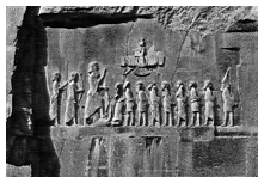The
Department of History
|
Fall 2019 |
|
|
Cultures of the Silk Road Hist 3504; ALL 3872; Rels 3708 |
|
|
|
|
|
The
cultures of the Silk Road flourished in present-day Central Asia, Since the fall of the Soviet Union, there
has been an attempt at reviving the Silk Road by creating an international
network of scholarship about the |
|
|
|
The Islamic World has played a fundamental role in the transfer
of the knowledge of the ancients, especially the thought of Plato and
Aristotle, to the West. This course exams ancient western thought and traces
its further development in the works of medieval scholars like Avicenna, Ibn
Rushd, and St. Aquinas. The course shows why the eastern and western
scholars' treatment of philosophy has resulted in the divide that plagues the
Muslim world and the West, including the United States, today. The course
ends with an examination of the activities of the Muslim Brotherhood, the
Taliban, and the Al-Qaeda in the context of the dynamics of early medieval
thought and the more recent western colonialism. |
|
Modern
Iran |
|
Modern |
|
Ancient Iran |
|
Ancient |



